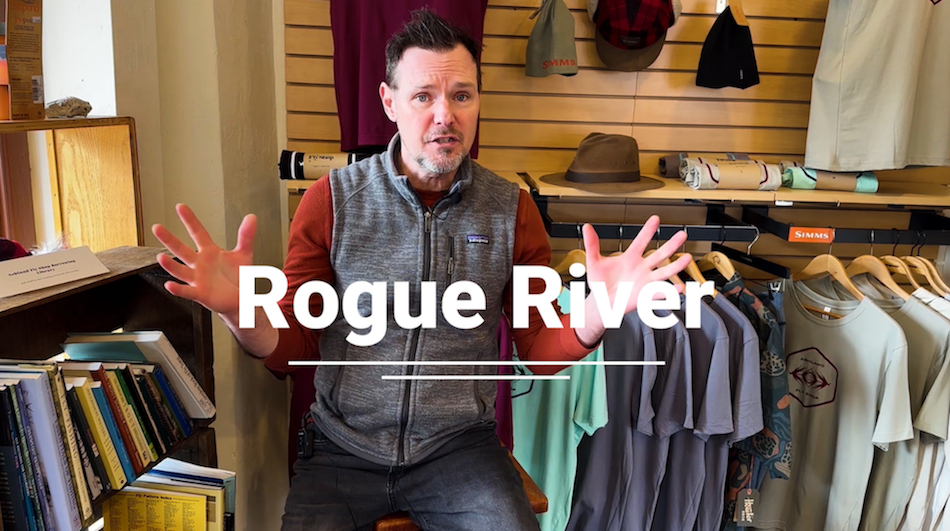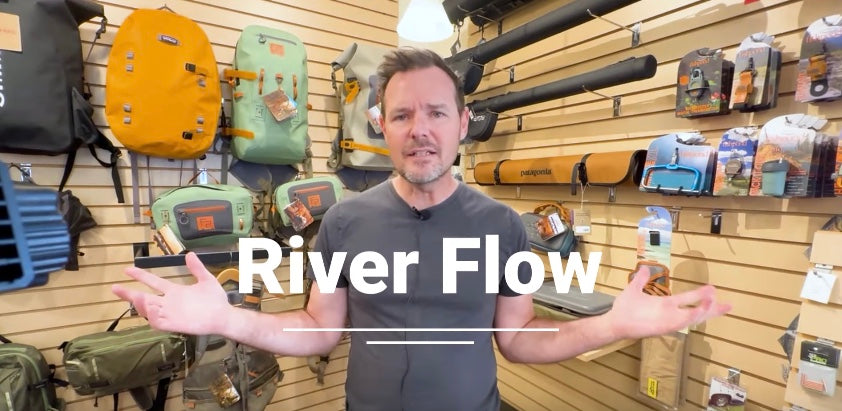Your Cart is Empty
free shipping on all domestic orders over $75

Scott O'Donnell, not only the "O" in "MOW", but makes a great lunch and has legendary hair.
McCune, O'Donnell, Ward. These guys are the Bros of MOW, credited in part for many of the "outside the box" innovations in the realm of Spey, as it pertains to Skagit line and sink-tip fishing.
Sink-tip fishing has come along way. When I started Spey casting, store bought sink-tips were limited to the "old school" 15 ft Type 3, 6, and 8. A few years later, T-14 came on the market. "T" stands for Tungsten and "14" designates grains per foot. T-14 allowed the angler to fish a shorter, faster sinking tip that was easier to cast, turned over flies better, and you could cut it to different lengths as needed. Next was T-8, T-11, and T-17. Skagit style sink-tip fishing was starting get "tactical". By fishing short pieces of "T" material (3-8 feet, for example), it allowed the angler to fish a wider range of water types. The problem was that with a really short sink-tip, the length of the overall line got shorter too, the caster had to dramatically adjust his stroke to prevent anchor pull, and it often resulted in a poor cast.
The advent of RIO MOW Tips have solved that issue. MOW Tips come in several variations, mostly in 10 foot lengths, with several sinking/floating combinations in Light, Medium, Heavy, and Extra Heavy designations. Given all the options, MOW Tips can be confusing. So let's see if we can clear up some confusion. "Heavy" MOW Tips, for example, are made of some combination of T-14 and a floating portion. Also included in the MOW Tips family are 10 and 12.5' sinking and a 10' floating tip. See chart below as a reference.

Again, these are available in Light (T-8), Medium (T-11), Heavy (T-14), and Extra Heavy (T-17) variations. Also, up to 10', we also have IMOW Tips. Instead of an integrated floating portion, they have an intermediate component, available in the same configuations.
So, what makes them tactical? I hosted a group of anglers and we fished with the "O" in MOW (Scott O'Donnell) last April on one our coastal rivers. We fished a lot different water on that trip. His approach to MOW Tip fishing was enlightening. Here's a brief recap of water types and MOW Tip application.
Situation A: Slow, medium to deep boulder strewn runs. A "5/5" MOW Heavy(5 ft float/5 ft T-14) was perfect in those scenarios. I was able to get a clean swing without hanging up. Flies have a lot of time to sink and fish have a lot of time to see your fly in that water type.
Situation B: Chunky, medium speed tailouts. Also perfect with a "5/5" MOW Heavy. Just enough sink-rate to keep the fly in the zone.
Situation C: Indicator type water. We fished several "bobber water" spots that most Spey fisherman would pass on. Again, the "5/5" MOW Heavy was the ticket. By changing to an upstream casting angle, letting the fly sink, and then tight-lining it through the slot, we were able to pick up a few extra fish on that trip. In my opinion, this is, in part, why MOW Tips were developed.
Situation D: Anytime, anywhere. Scott revealed to me that he fishes a "5/5" MOW Tips most of the time. He will change the length of his leader, the weight of his fly, and his presentation depending on the water type. Obviously, there are spots where that doesn't work. But, if I had to guess, given our days with him on the water, he rarely changes.
Situation E: Deep, heavy water. Sometimes you just have to dredge. 10' or 12.5' of T-14 (Heavy) or T-17 (Extra-Heavy) are in order. O'Donnell put one of our guys in a spot at the mouth of creek. Steelhead hung deep in the confluence and it required a serious sink-tip to get the fly in front of them. I am not sure how heavy or long the tip was, but I could tell that it was not fun to cast. My guess is that it was at least 15' of T-14. You might only fish one or two spots in a day that require that much sink-tip. It might get you an extra fish or two, though. Any "T" material sink-tip over 12.5' has to be custom made from a 30' "Level T" section or from bulk material.
Situation F: Everywhere else. In general, from October to April, I am fishing 10' of T-14. I can make that work in 75% of the water I fish. There are a couple of spots I like the "2.5/7.5" Mow Heavy (2.5' Floating/7.5' T-14) and several where I will fish the "5/5" MOW Heavy. Rarely do I fish the "7.5/2.5" (7.5' Floating/2.5' T-14). But, it certainly has it's application.
Final thoughts. I think the key to understanding sink-tip fishing is by actually going fishing. Ask yourself this question- what am I trying to accomplish and how am I going to accomplish it? Conceptualize how you want to present your fly and what it's going to take to get it done. Think about all the variables: depth, current speed, water temps, and water type. Study the water, try something, and see if it works.
If you want to dip your feet into the tactical nature of MOW Tips fishing, start with a "5/5" in Medium (T-11) or Heavy (T-14). Try fishing some different water, try different casting angles, approach it differently. Don't get too caught up in the difference between MOW Medium or Heavy, for example. In terms of sink rate, we're just splitting hairs.
Also, for my own sanity, even though they are part of the MOW Tip family, I don't refer to the full floating or full sinking 10 or 12.5 ft lengths of T-8, T-11, T-14, or T-17 as MOW Tips. To me, the integrated float/sink variations of MOW Tips are MOW Tips, as they really are more tactical in nature.

A February fishing report from Will, covering current and upcoming river and weather conditions on the Rogue, Applegate, Umpqua, and several rivers in northern California!

